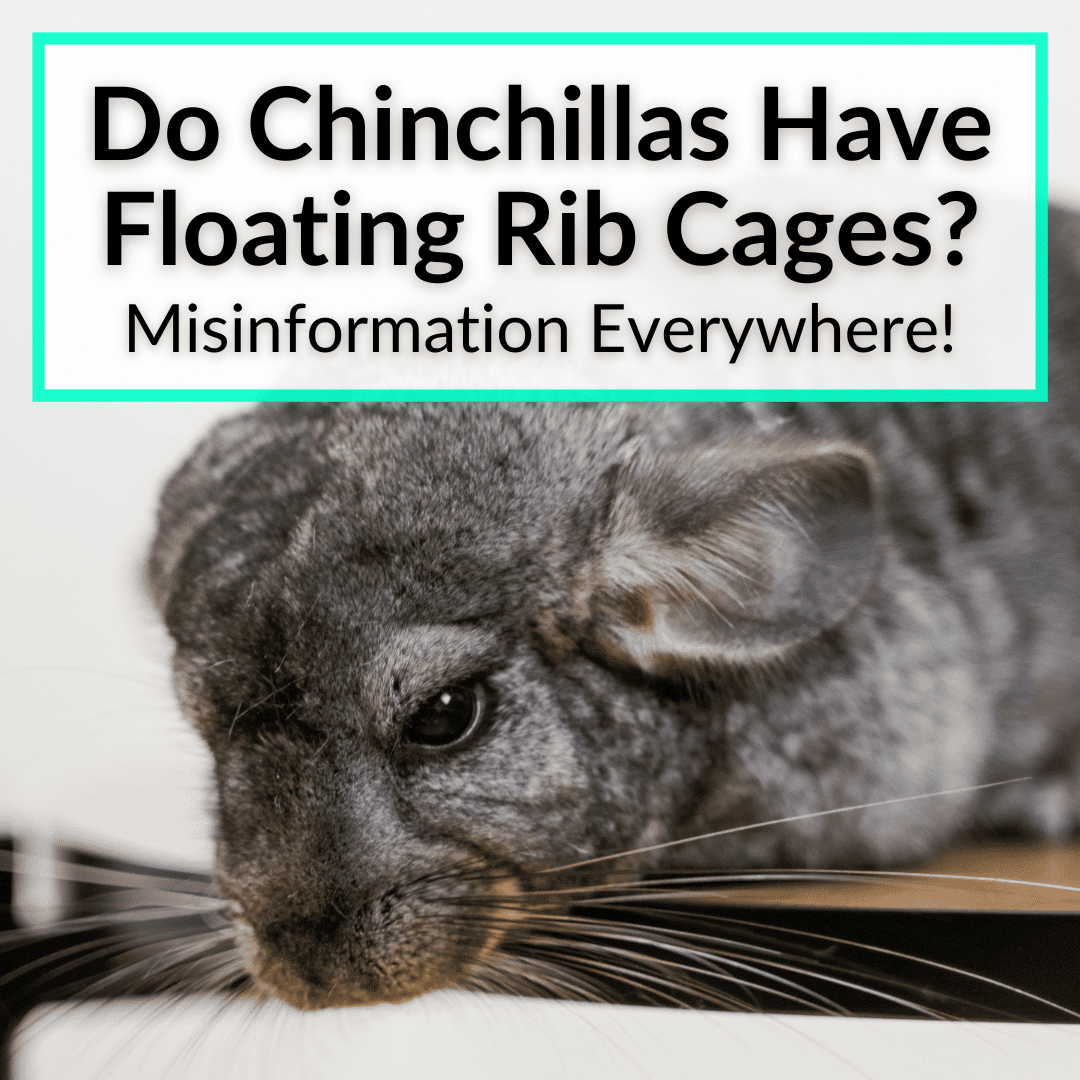
But what exactly does that mean?
Most importantly, what does this mean for you as a chinchilla owner?
We will cover everything you need to know.
And we will begin with the fact that chinchillas don’t actually have floating rib cages.
At least not quite.
Keep reading to learn why many people say that chinchillas have floating rib cages, what they actually have, and what that means for us as chinchilla owners.
Contents
Do Chinchillas Have Floating Rib Cages?
Chinchillas do not have floating rib cages. Instead, they have two floating ribs on either side of the spine.
These delicate and flexible ribs are not attached to the sternum. They are only attached to the vertebral column. It is a myth that a chinchilla’s entire rib cage is floating.
Let’s take a closer look at exactly how a chinchilla’s rib cage is structured and why the myth of the floating rib cage persists.
Chinchilla Rib Cages
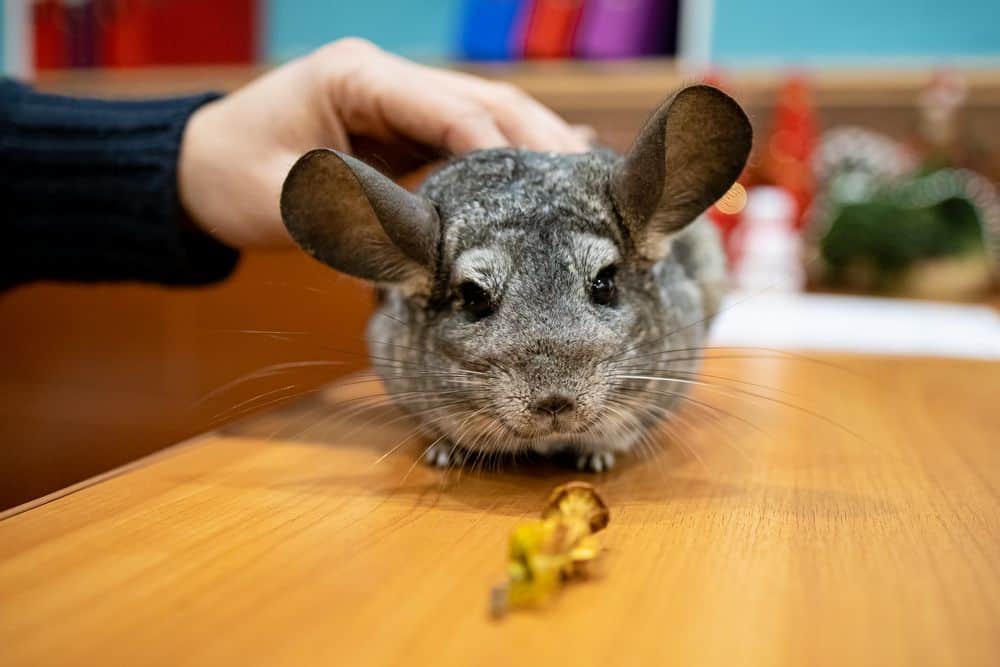
While chinchillas do not have floating rib cages, they do have two floating ribs on either side of the spinal column.
Floating ribs are vertebral ribs that are not attached to the sternum or breastbone ventrally, but are only connected to the vertebral column.
The rest of a chinchilla’s ribs are true ribs. In all, chinchillas have 14 ribs. The 13th and 14th pairs are the ones that are floating.
You can see X-rays of a chinchilla skeleton here. It clearly shows the last two pairs of ribs floating.
Many websites erroneously state that chinchillas have three floating ribs. That isn’t the case and the x-ray proves it.
What Do Floating Ribs Mean For A Chinchilla?
The fact that chins have floating ribs makes them very vulnerable to injuries and nerve damage. If you pick up your chinchilla around its waist, there is a possibility that you might hold it too tight.
Since its last two pairs of ribs aren’t attached, they tend to move and have a slight give. Most newbie owners (especially kids) end up squeezing their pet around their mid-section, thinking there is nothing there.
Furthermore, people are unaware of their own strength and end up squeezing their delicate pet with too much force. People may not understand that what feels like gentle pressure to them may be too much for the delicate chinchilla. We have an article on how to pick up a chinchilla correctly.
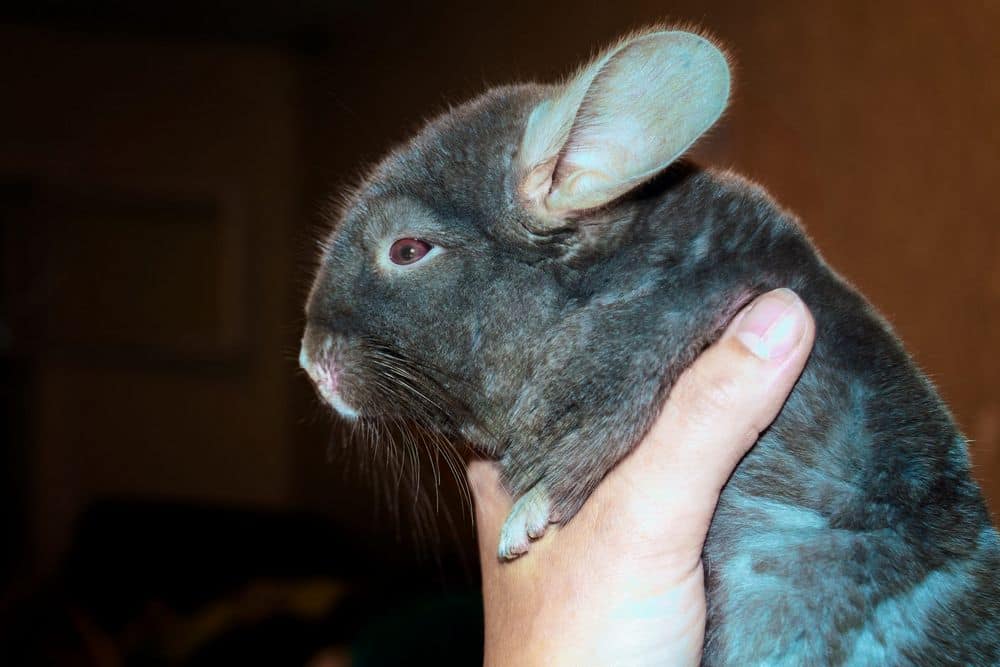
Even a slight squeezing action can be harmful to your pet. It could fracture your chinchilla’s delicate rib bones and, worse, permanently damage the nerves in the region. This could lead to neurological issues.
It is also important to understand that these small animals startle easily. If you happen to handle your chin and it gives a jerky movement that indicates it is frightened or startled, then for most owners, the first instinct is to hold it even tighter.
This could end up shattering the delicate floating rib bones causing irreparable damage to your little furry pet.
Do Chinchillas Have Fragile Ribs?
Yes, according to the experts at Dufferin Veterinary Hospital, chinchillas have very fragile bones and their ribs are especially fragile and delicate.
Their brittle bones and floating ribs can break or fracture easily. That is why you must take precautions while handling a chinchilla. This is also the reason chins are not the ideal pets for boisterous and irresponsible kids.
How To Safely Hold A Chinchilla
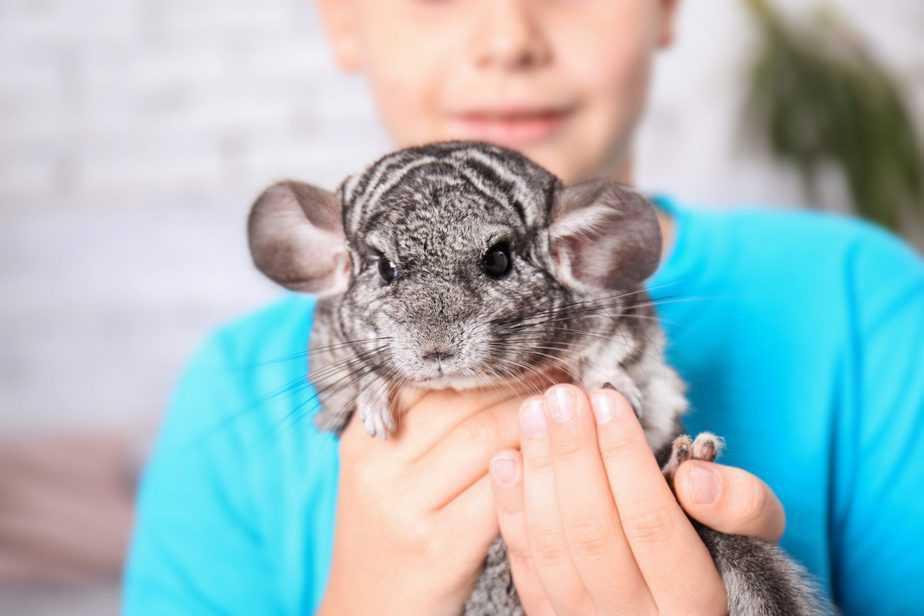
According to the PDSA (Vet Charity for Pets, UK), here are the steps to hold a chinchilla safely.
- Only a responsible adult should handle a chinchilla
- Place one hand gently under its chest and lift and support its hind legs
- Hold your pet close to your body
- Make sure your chinchilla remains upright.
Can You Hold A Chinchilla By Its Tail?
There are two lines of thought here. One states that you must never hold a chinchilla by the tail. It could fall off and its tail will never grow back.
Another line of thought is that holding a chinchilla by its tail is the safest way to hold it. However, you must hold the chinchilla by its tail very close to the body, while supporting its legs at the same time.
Never hold a chinchilla by its tail more than an inch out from the base of the tail. Doing so could strain the tiny ligaments and even break the delicate bones in the tail.
What Is Fur Slip In Chinchillas?
Fur slip is a defense mechanism in chinchillas. They “do a fur slip” in response to being handled roughly. They release a patch of fur when stressed or anxious.
In the wild, fur slipping helps chins escape their predators. The ball of fur remains in the predator’s mouth allowing the chinchilla to escape.
If your pet chinchilla is getting bald or losing a lot of hair, you might want to take a look at your chinchilla handling methods.
Why Do Chinchillas Not Like To Be Held?
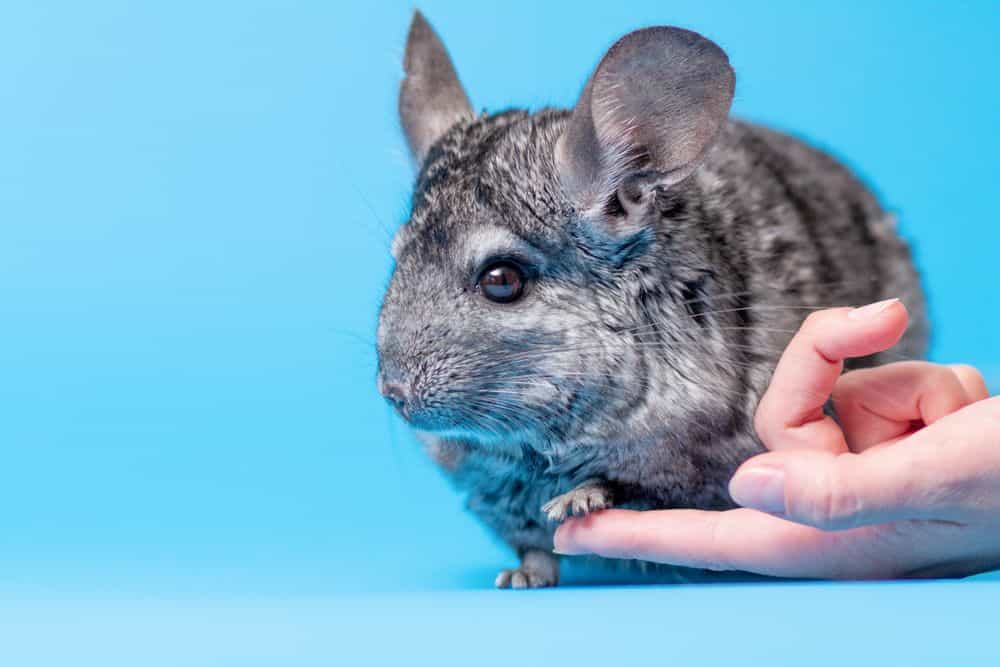
This is one of the major drawbacks of having a chinchilla as a pet. They need more socialization than most of the other small pets. Your chinchilla won’t appreciate being handled, at least in the beginning.
There are multiple reasons behind this. Let’s take a look at some reasons chinchillas generally take a long time to warm up to us enough to be comfortable with us holding them.
They Are Prey Animals
Being a prey animal means that your chinchilla is always on guard. It just does not feel comfortable being handled, and won’t until it gets used to you, trusts you, and feels safe with you.
Being a prey animals causes the natural flight-or-fight response to kick in every time someone handles it. This will cause stress and panic in your pet.
Past Trauma
Many new owners (especially young kids) start cuddling and handling their chinchillas right away. They might not be aware of the pressure they exert on their fragile pet. This could permanently instill fear of being held in the chinchilla.
Many chins love cuddling with their owners, but only after they get used to them and trust them. After all, they love the body warmth they derive from cuddling.
But if one family member has held the chinchilla too tightly or handled it too roughly, then it might permanently not like being held by that individual.
Lack Of Training
Chinchillas need to be trained to be handled. It can take weeks and even months for a chinchilla to trust its owner. Consistency and frequent handling are the best way to get a chin used to be handled.
If this training is lacking, especially when the chinchilla is young, then it may not like being held, even in adulthood.
Do Chinchillas Like Being Stroked?
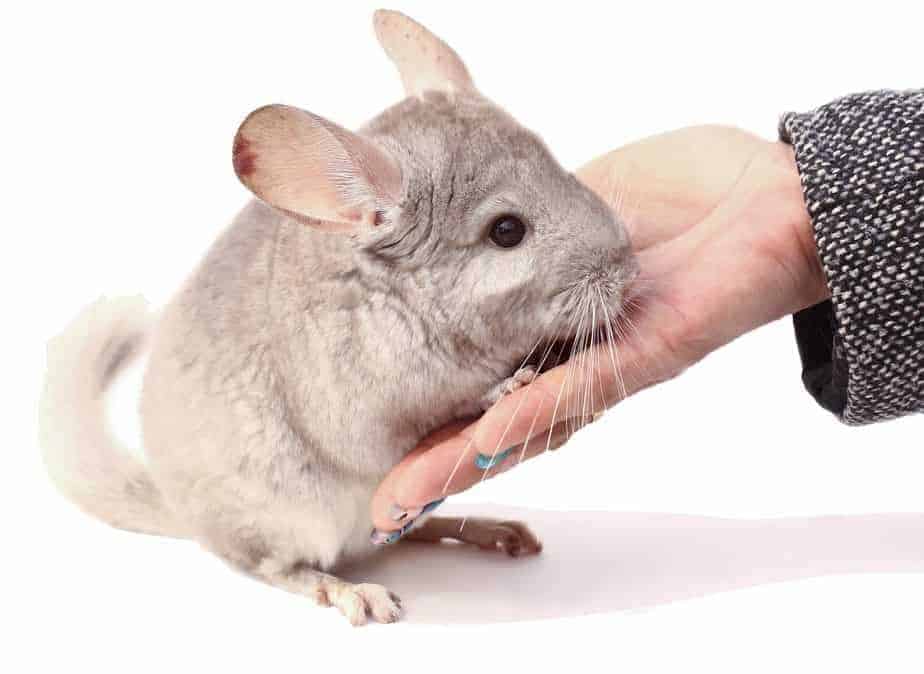
Most chinchillas are nervous creatures and they do not like being stroked. Your new chinchilla will never come out of its cage right away and sit on your lap. That is just a given.
They are certainly not like cats and dogs. Most chins take time to warm up to their humans. They need to be socialized to get used to being cuddled and stroked.
However, once you start feeding and taking care of your chinchilla and have it get used to your presence, it might allow you to cuddle with it or even stroke it.
Assess your pet’s reaction when it sits next to you. You can offer it some treats and then stroke its head. If it seems comfortable with that, you can gently stroke its back.
The key is to not rush into it. Start slow and progress gradually. Remember: no two chinchillas are the same. Some might just take more time in warming up and getting used to being handled.
How Far Can Chinchillas Fall?
Chinchillas are excellent jumpers. They can jump very high in the air, almost like rabbits. Most can also take a fall up to several feet. However, a lot depends on how they land.
If your chin lands on its paws it should be okay. Their paws are padded and designed to take impacts. If your pet gets up and starts moving right away, it should be fine.
It is still a good idea to monitor your pet over the next few hours. You know your chinchilla best, so do monitor its behavior and watch out for limps or lethargy.
If a chin lands on its belly or back, then it could be dangerous, since its fragile bones could fracture easily.
Remember: chinchillas are very good at hiding their injuries. So keep an eye on your pet and when in doubt, consult your vet right away.
Chinchilla Floating Rib Cage: Final Thoughts
While you will hear from numerous sources that chinchillas have floating rib cages, that is not strictly true. They have two pairs of floating ribs, but the remaining ribs are not floating.
That said, all of their ribs are small and delicate. It is easy to cause injury to a chinchilla while holding it, without even realizing you did so.
That is why you must always hold your pet with the utmost care. And never force the issue. If your chinchilla is not comfortable with being held, work on building trust and a deeper bond first. Hold your chin when it is ready, and not before.
Leave a Reply